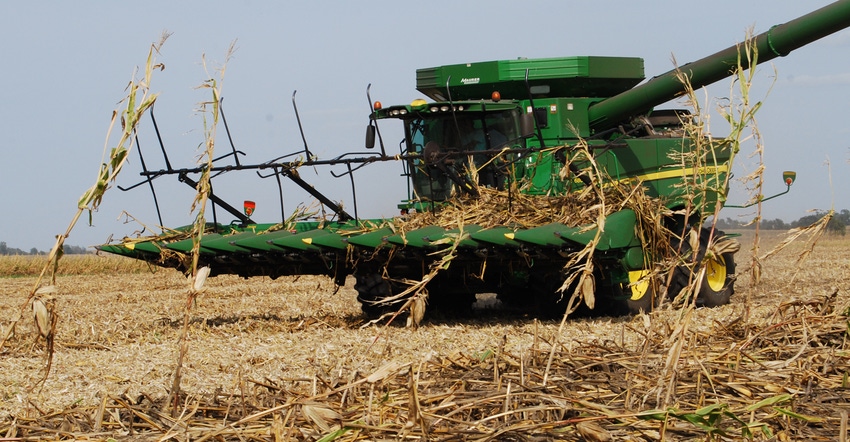October 28, 2020

Thousands of Iowa farmers are receiving millions of dollars in payments from the USDA Farm Service Agency in October. These include funds from the Conservation Reserve Program, 2019 Agricultural Loss Coverage and Price Loss Coverage programs, and the new Coronavirus Food Assistance Program (CFAP 2) payments.
A typical 2019 PLC payment for corn is roughly $16 per corn base acre, depending on the old PLC yield on that farm. Agriculture Risk Coverage County (ARC-CO) payments in Iowa averaged about $1.60 per corn base acre and were projected to be made in only 11 counties statewide.
A typical 2019 ARC-CO payment for soybeans in Iowa was roughly $5 per soybean base acre. Statewide, only 36 counties were expected to trigger payments. There are no PLC payments on soybean base acres.
ARC, PLC payments
About 80% of eligible corn base acres nationwide were enrolled in the PLC program for both the 2019 and 2020 crop years. This same percentage, about 80% of the eligible soybean base acres, were enrolled in the ARC-CO program. The final enrollment percentages for Iowa have not yet been released by FSA and will include a few thousand farms that enrolled in the ARC Individual (ARC-IC) program by farm and by crop for this two-year period.
Decision tools for figuring ARC and PLC payments are available on the Iowa State University Ag Decision Maker website. The AgDM site also has links to recordings of ISU Extension webinars explaining government farm programs and financial assistance, such as the recent presentation on 2020 Government Payments and Active USDA Programs.
Here are deadlines to know:
Dec. 11 for CFAP 2. The new Coronavirus Food Assistance Program 2 payments are now being made. If you haven’t yet applied, you have until Dec. 11 to do so. For commodity crops, these payments will vary based on the actual production history yields on a farm. Payments are expected to be roughly $35 per planted acre for corn and $15 per planted acre for soybeans. Additional commodities are also eligible for CFAP 2 payments that might not have been eligible for CFAP 1. A complete list of eligible commodities, payment rates and calculations can be found on farmers.gov/cfap.
Producers seeking one-on-one support for the CFAP 2 application process can call 877-508-8364 to speak directly with a USDA employee. This is a recommended first step before a producer engages with the team at a local FSA county office.
WHIP-Plus program eligibility. Other potential payments also exist for both the 2018 and 2019 crops under the Wildfire and Hurricane Indemnity Program — Plus. The new application deadline of Oct. 30 was recently announced to apply for this disaster aid. WHIP-Plus is an all-encompassing disaster aid program for hurricanes, floods, snowstorms, tornadoes, typhoons, volcanic activity, drought, excessive moisture and wildfires occurring in 2018 and 2019.
Drought and excessive moisture were added as eligible losses for the program in March, which made more Iowa crop acres eligible. Many crop insurance agents were made aware of this program since it involved county disaster declaration. Keep in mind that for the WHIP-Plus program, drought loss eligibility is for 2018 and 2019, not 2020, according to USDA’s latest announcement.
USDA recently stated that FSA has received 133,000 applications for WHIP-Plus disaster assistance and paid out nearly $1.4 billion so far. A new website tool was recently launched at farmers.gov/recover/whip-plus. The tool will help producers provide information to USDA staff as well.
Crop insurance payment. As a result of the severe summer weather events this year, the USDA Risk Management Agency authorized approved insurance providers to offer policyholders extra time to pay premium and administrative fees. Plan to pay your 2020 crop insurance premium on or before Nov. 30 to avoid a penalty and the accrual of interest charges.
Farmers with crop insurance questions or needs should continue to contact their insurance agents. Information is also available at rma.usda.gov.
Johnson is an ISU Extension farm management specialist. Email [email protected].
About the Author(s)
You May Also Like






